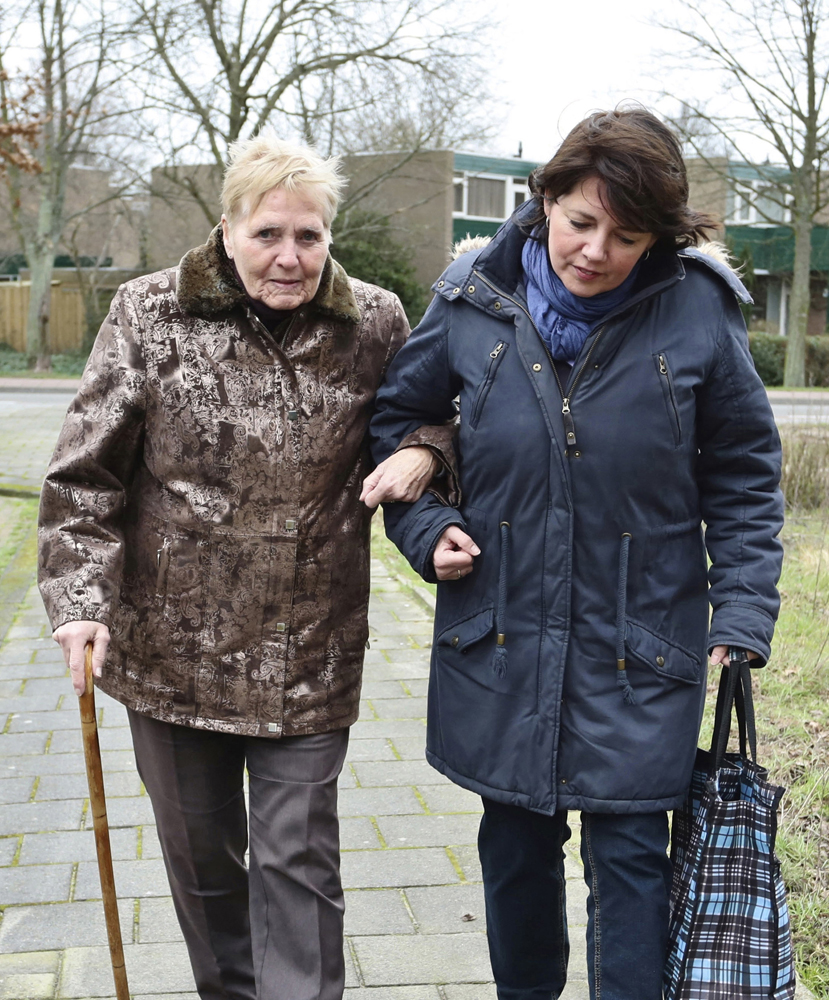Living with dementia or Alzheimer’s is very tough, even if you have friends and family around to deal with daily task. Prisons, now, are dealing with an unusually high number of prisoners with dementia and some have even set up dementia wards. Timothy Doherty, a senior officer specialist at F.N.C. Devens, which houses federal prisoners who require medical care, estimates that 90% of the men he oversees don’t know what they did. Some of them don’t even know where they are. What a terribly sad way to end your life.
Salinas, CA There Are Things You Can Do To Stave Off Alzheimer’s & Dementia
A new study which was published in the Journal of the American Geriatrics Society followed 18,000 older adults and found that those that regularly used the Internet had about half the risk of developing dementia compared with those who didn’t regularly use the web. Other studies have shown better cognitive performance, verbal reasoning and memory among Internet users. Regular readers of my blog know that both my father and my grandmother had Alzheimer’s disease when they passed away. If you need support, there are a great group of people at the Ryan Ranch Alzheimer’s Association. They also have a 24-hour hotline if you just want someone to talk to at 800-272-3900.
Caring For A Parent Can Cost Over $1 Million
We are facing a crisis in America, with many senior citizens outliving their retirement savings and then slip into dementia where family needs to step in and help them and/or pay for caregivers—which can be very expensive, The Wall Street Journal recently ran a story called “When Caring For Mom Costs Over $1 Million.” The story profiled Violet Carson, who had seen her husband pass away when he was 78. Her daughter told The Journal that the family thought Violet wouldn’t last much longer as she had Parkinson’s disease, Lewy body, dementia and was already on 24/7 care. “Never in my wildest dreams did I think she would last until she was 88,” said her daughter Teresa Wyche. The Carson Family spent more than $1.3 million taking care of Violet at home over more than a decade’s time. Thank God they could afford it—the median net worth of people 75 and older is $254,800, according to the Federal Reserve Bank. This truly is a crisis with seniors running out of money later in life just as their health and mental capacity begins to decline.
Monterey, CA There Are Things You Can Do To Stave Off Alzheimer’s & Dementia
A new study which was published in the Journal of the American Geriatrics Society followed 18,000 older adults and found that those that regularly used the Internet had about half the risk of developing dementia compared with those who didn’t regularly use the web. Other studies have shown better cognitive performance, verbal reasoning and memory among Internet users. Regular readers of my blog know that both my father and my grandmother had Alzheimer’s disease when they passed away. If you need support, there are a great group of people at the Ryan Ranch Alzheimer’s Association. They also have a 24-hour hotline if you just want someone to talk to at 800-272-3900.
Pacific Grove, CA There Are Things You Can Do To Stave Off Alzheimer’s & Dementia
A new study which was published in the Journal of the American Geriatrics Society followed 18,000 older adults and found that those that regularly used the Internet had about half the risk of developing dementia compared with those who didn’t regularly use the web. Other studies have shown better cognitive performance, verbal reasoning and memory among Internet users. Regular readers of my blog know that both my father and my grandmother had Alzheimer’s disease when they passed away. If you need support, there are a great group of people at the Ryan Ranch Alzheimer’s Association. They also have a 24-hour hotline if you just want someone to talk to at 800-272-3900.
Pebble Beach, CA There Are Things You Can Do To Stave Off Alzheimer’s & Dementia
A new study which was published in the Journal of the American Geriatrics Society followed 18,000 older adults and found that those that regularly used the Internet had about half the risk of developing dementia compared with those who didn’t regularly use the web. Other studies have shown better cognitive performance, verbal reasoning and memory among Internet users. Regular readers of my blog know that both my father and my grandmother had Alzheimer’s disease when they passed away. If you need support, there are a great group of people at the Ryan Ranch Alzheimer’s Association. They also have a 24-hour hotline if you just want someone to talk to at 800-272-3900.
Medicare Part B Premiums May Increase Due To Expensive Alzheimer’s Drug
We are all thrilled that a new drug has been approved by the Food & Drug Administration (FDA) to treat Alzheimer’s disease. It has been over a decade since a new drug has been introduced to treat this horrible condition. As regular readers of my blog know, both my father and my grandmother had Alzheimer’s disease when they passed away. I asked Nana when she was 94 if she knew who I was and she looked at me for several minutes trying to come up with a name. Finally, she said, “I don’t know who you are but I know that you love me.” On the bad news side of the equation of Leqembi is that it’s very expensive and could drive up Medicare Part B premiums by almost $10/month in 2024. The drug will be the third most costly drug covered by Medicare Part B, according to the non-profit health researcher KFF. Another estimate from a non-partisan seniors group The Senior Citizens League, estimates that the drug will add $5/month to the tab for everyone who has Medicare Part B.
There was a 15% increase in premiums in 2022 when another Alzheimer’s drug, Aduhelm, was approved by the FTC and hit the market. The Senior Citizens League has projected a 3.0% cost of living, or COLA, in 2024, and a Part B premium increase of 8.7%. Medicare is estimated to cost about $5K/year to Medicare recipients who take the new drug, with $26,500 the government paying the balance of the treatment, according to KFF.
Carmel, CA There Are Things You Can Do To Stave Off Alzheimer’s & Dementia
A new study which was published in the Journal of the American Geriatrics Society followed 18,000 older adults and found that those that regularly used the Internet had about half the risk of developing dementia compared with those who didn’t regularly use the web. Other studies have shown better cognitive performance, verbal reasoning and memory among Internet users. Regular readers of my blog know that both my father and my grandmother had Alzheimer’s disease when they passed away. If you need support, there are a great group of people at the Ryan Ranch Alzheimer’s Association. They also have a 24-hour hotline if you just want someone to talk to at 800-272-3900.
C4A Conference Covers A Wide Array Of Seniors Issues
Burbank, CA The C4A Conference 2023: Mapping the Future of Aging and Disability in California, held here May 9-11, covered a vast number of topics, some uplifting, and some depressing. The most depressing issue discussed, by far, is the Republican bill passed in April which proposed raising the nation’s debt limit to $31.4 trillion in exchange for massive cuts in spending.
The bill would return the government’s discretionary spending to fiscal 2022 levels in fiscal 2024 and then cap annual spending growth at about 1% over the next decade. With inflation well over 1%, this would translate to draconian budget cuts to many social services programs, with declines in funding as much as 30% to most programs if Social Security and Veterans benefits are left intact.
Somewhere in the middle of uplifting and depressing was a panel on Affordable Housing where Dan McDonald and Michael Siglala discussed an affordable housing project called Magnolia Crossing where they were able to build a facility with 16 units of memory care and 36 which were assisted living. They were studio units, where everyone had their own bathroom and housed anyone from a full-pay to someone on Medi Cal. Unfortunately, they have not been able to replicate the model (which was built a decade ago in 2013). “The Assisted Living Waiver program is great but it’s unpredictable. The reimbursement rates are 10-20% below what they could be to make this feasible,” said Sagala, from Innovative Development and Living Solutions.
There was another panel on Affordable Housing, or rather the lack of it in California, which has resulted in an inordinate number of seniors joining the growing rank of homeless people. It featured Dr. Joshua Bamberger from UCSF Family Community Medicine who left his job during the height of COVID-19 to study 3,500 homeless people who were moved into housing, mostly using tourist hotels. “We can house everyone if we want to. We’ve proven this during the COVID crisis,” he said.
There were also some disturbing panels on Alzheimer’s disease and wandering. I am, unfortunately, very familiar with these topics as both my father and grandmother had Alzheimer’s disease. I have raised over $100K for the Monterey chapter of Alzheimer’s Association and sponsored a number of their annual events through my company Family inHome Caregiving.
In a keynote speech on May 11, Sandy Markwood, the CEO of U.S. Aging, released preliminary data from a 2022 Area Agency on Aging (AAA) survey which found:
80% of AAAs serve individuals with a disability or chronic/serious illness;
49% of AAAs serve consumers with dementia of all ages; and
33% serve veterans under 60.
The survey also noted that 1 in 2 American adults report being lonely and 72% of AAAs are developing specific programs for people living with dementia.
One panel noted that many people who have Alzheimer’s or some type of related dementia are diagnosed with it but their doctor doesn’t tell them. I was shocked to hear Michele Johnston, Program Director for Dementia Initiatives at the California Department of Aging, say that, “Half of the people diagnosed with dementia are never told by their physician.” It is just written down in a note in their charts and/or used as a justification for reimbursement from the insurance company or Medicare. That’s shameful.
Another panel discussed how seniors who are members of minorities like African Americans, Asians, Hispanics, the LGBTQ Community and Native American’s are underserved and what we are doing to change this.
On a more uplifting note, one company did a presentation who actually has a solution for the victims of Alzheimer’s, dementia, autism and other diseases where victims lose their bearings and wander off. The L.A Found Initiative has been rolled out by the Aging and Disabilities Department, a division of Adult Protective Services, using a device provided by the non-profit Project Lifesaver.
The way it works is people receive a wrist band which can be put on their hand or foot and if they wander off, the device will be able to find them within a distance of 3 to 5 miles. Cinthie Lopez Paz, Leader of L.A. Found Initiative noted that 60% of those living with Alzheimer’s disease will wander at some point.
To date, they have a wonderful track record of having 26 successful saves of people who have wandered off. Hopefully, we will have more uplifting stories like this at the 2024 C4A Conference, and the Debt Ceiling will have been raised without draconian cuts to social services.
Solution Found For Alzheimer’s and Dementia Victims Who Wander Off
Burbank, CA Speaking at the C4A Conference 2023: Mapping the Future of Aging and Disability in California, held here May 9-11, two Los Angeles County employees described the success they have had in finding Alzheimer’s and dementia patients who wander off. To date they have had 26 successful saves of wanderers and hope to bring the program to all of California, and eventually all of the U.S.
It’s called the L.A. Found Initiative and has been rolled out by the Aging and Disabilities Department, a division of Adult Protective Services (APS) and the Los Angeles County Sheriff’s Office. The L.A. Found Initiative uses a device provided by a non-profit called Project Lifesaver.
Cinthie Lopez Paz, Leader, L. A, Found Initiative, said, “Addressing those family members of those who are wandering has been difficult. There is a lot more work to be done. Families don’t call law enforcement right away, that has been a challenge for us as time is of the essence. We have tried in various ways to get that message out there, they need to call the authorities right away,” she said.
The genesis of the program was that a woman went missing and eventually was found to be dead after wandering off. She had no past history of doing so and the whole incident was a complete shock to her family. The Board of Supervisors decided to put together a Task Force on wandering. They met for about 18 months, and as a result of their work a report of 17 strategies were put together and approved by the Board. “And we are one of those 17 strategies so we can have better outcomes in wandering situations,” said Paz.
Participants in the program wear a bracelet that emits a signal constantly. The normal range of antennae is 3 to 5 miles. “The person could have wandered in any direction so this really increases the chances of finding the person. For this particular device, time is of the essence,” said Paz
She said that they have actively been engaging with law enforcement in order to get buy-in. Although not for everyone, she noted that “Some type of technology is better than none. Because wandering behavior is unpredictable.”
Christina Michii-Raggio, Community Services Analyst with the L.A. County Aging & Disabilities Department, said that “It is rewarding to work for this population but there is so much need. We work closely with the Alzheimer’s data,” she said, which was dire (see Alzheimer’s presentation).
She noted that over 60% of those living with Alzheimer’s disease will wander at some point. The number of people with Alzheimer’s disease is actually unknown because 10% of Americans age 45 and older reported subjective cognitive decline, but 54% of this group had not consulted a healthcare professional, according to The Behavioral Risk Factor Surveillance System survey.
She said that a Project Lifesaver Tracker has a radio frequency RF with a number unique to each individual so that specially trained search and rescue teams can triangulate the signal and locate the person. In this project, members of the L A County Sheriff’s Mental Health Evaluation Team are trained in the use of the equipment and in mental health. The implementation of the strategic methods specifically designed for the program.
The Aging & Disabilities Department in collaboration with the LA County Sheriff’s Department administer the program in LA County. The tracking bracelets as well as replacement batteries, spare parts, continued support and recommendations to keep the loved one safe are provided for free by Project Lifesaver, which is a 501 (c)3.
Eligibility:
Alzheimer’s dementia or autism
Prone to wandering
L.A, County Resident
It’s not just for Alzheimer’s patients–19% of over 1,000 units deployed have gone to those with Alzheimer’s, 31% have dementia, 26% are autistic, and about 5% have multiple dementia and disability.
The person receiving the equipment must have a Surrogate Decision Maker in the following order of priority:
Spouse
Domestic partner
Adult son or daughter
Custodial Partner
Adult brother or sister
Adult grandchild
Available adult relative (with the closes degree of kinship)
They also have a referral process so social services and other agencies can refer an individual. In addition, they do focus on alternative technologies like free applications on your cell phone or GPS/Cell based tracking devices.
For a list, click on this link.







